Editor's note: There are 43 items inscribed on UNESCO's Intangible Cultural Heritage lists that not only bear witness to the past glories of Chinese civilization, but also continue to shine today. China Daily looks at the protection and inheritance of some of these cultural legacies. In this installment, we retrace the footprints of the "tea saint" to discover the origins, and understand the evolution, of Chinese tea culture.
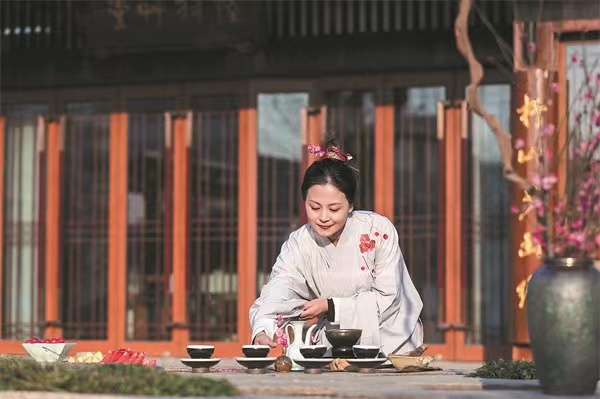
Tea rituals are held to commemorate Lu Yu, revered as the "tea saint", in Miaoxi town, Huzhou, Zhejiang province. [Photo provided to China Daily]
In his 20s, Lu Yu, revered as the "tea saint", traversed the expanse of China, particularly the Huaihe River Basin and the lower reaches of the Yangtze River, researching all there is to know about tea.
Eventually, he completed The Classic of Tea, the first compendium of the drink in China, outlining the knowledge he garnered, from the explanation of tea, its tools and vessels, to its production, brewing and customs.
Some might say that taste is subjective, but Lu decided on a set of criteria for the most superior variety of tea — those resembling bamboo shoots and having a purple hue.
This type of tea was, not surprisingly, named Zisun Tea, literally meaning "purple bamboo shoot", and produced as a tribute exclusive to the emperors. It is said that Lu was the one who recommended it to the imperial court of the Tang Dynasty (618-907).
China's first imperial tea factory was then established to produce the Zisun Tea, located in Changxing county, Zhejiang province's Huzhou, the city being deemed by Lu as the best tea-producing area in what is today's northern Zhejiang and southern Jiangsu province.
On its original site — Guzhu Hill in Changxing — the Tang Dynasty Imperial Tea Factory has now been rebuilt, and is where contemporary tea masters are working to preserve and refine the ancient Zisun Tea production techniques.
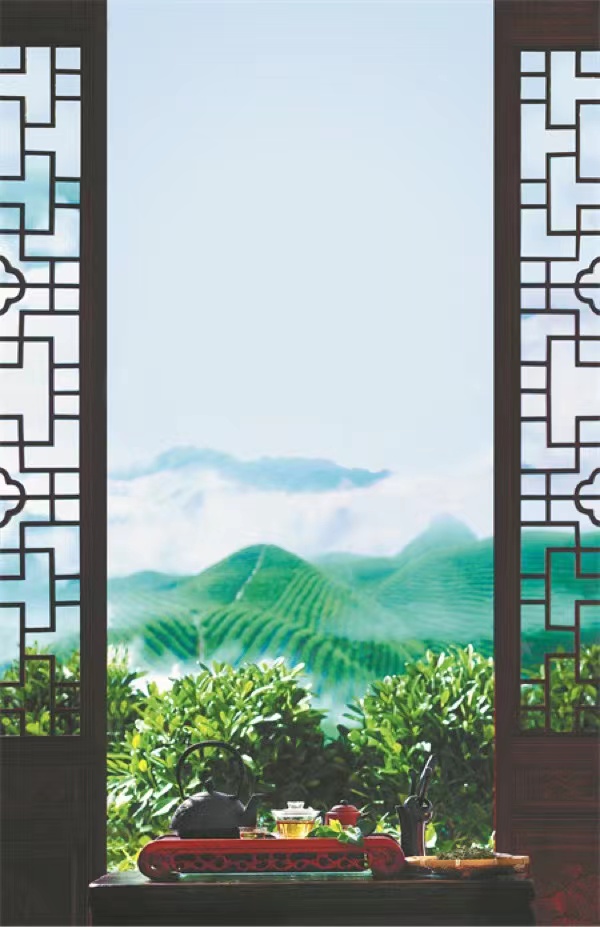
Tea has been a symbol of a refined lifestyle since ancient times. [Photo provided to China Daily]
"Poet Geng Wei once visited Lu Yu, and the pair enjoyed a lyrical discourse. When Geng expressed his awe at Guzhu Hill's misty beauty and longing for Lu's life, Lu replied that he has to climb up the hill every day before dawn and study the tea leaves, which confirms that Lu worked at the tea factory," says Lin Ruiyang, director of the organization.
While contemporary people typically brew processed tea leaves, as recorded in The Classic of Tea, the manufacture of Zisun Tea involved seven procedures, before the tea leaves were compressed into its distinctive flat and round shape with a hole in the middle.
Since the 1970s, the Changxing government has been engaging tea experts in the restoration of the traditional tea-making technique. As a provincial-level inheritor of the Zisun tea-making craft himself, Lin embarked on a journey to make improvements and innovations.
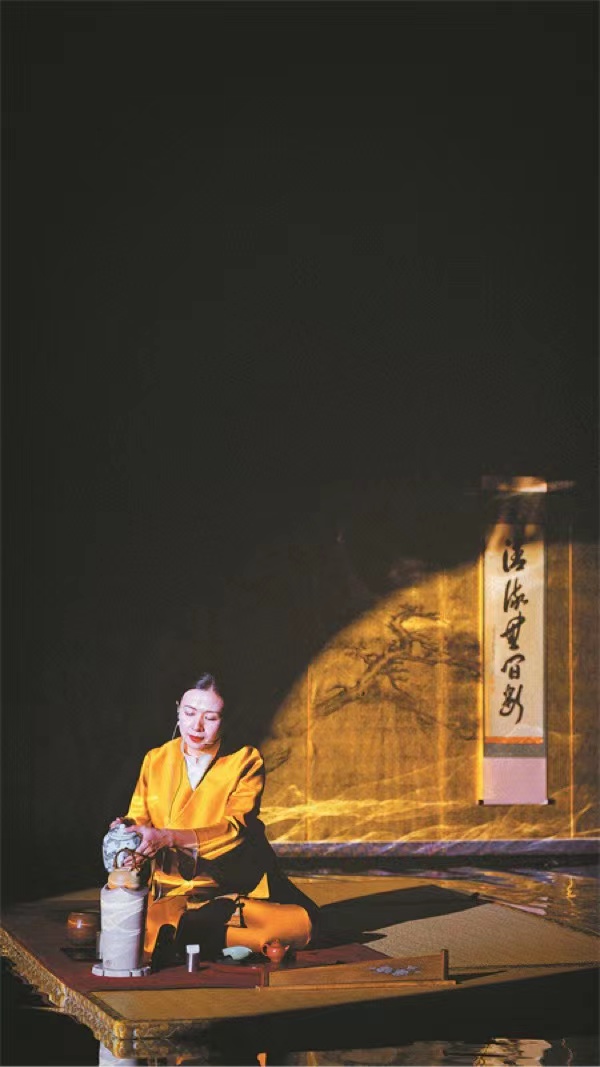
Zhushan Cultural Park hosts events to commemorate Lu Yu. [Photo provided to China Daily]
One day, while delving into ancient texts, Lin stumbled upon a steaming technique used during the Tang Dynasty, which transforms the enzymes in the tea and prevents the leaves from turning brown.
This led him to rethink the process of making Zisun Tea.
After countless attempts, and much trial and error, he finally came up with a modernized steaming technique that helps preserve the tea's distinct flavor, as well as substantially increasing its shelf life.
"Based on many ancient records, Zisun Tea enjoyed immense popularity. So, as an inheritor of intangible cultural heritage, it is my duty to pass down the ancient tea-making technique from one generation to the next," Lin says.
Apart from producing tea, the factory is also a tourist destination, where visitors can admire the cliffside inscriptions left by Tang Dynasty scholars, study tea culture and history, or simply spend a quiet afternoon sipping tea amid the soothing scenery.
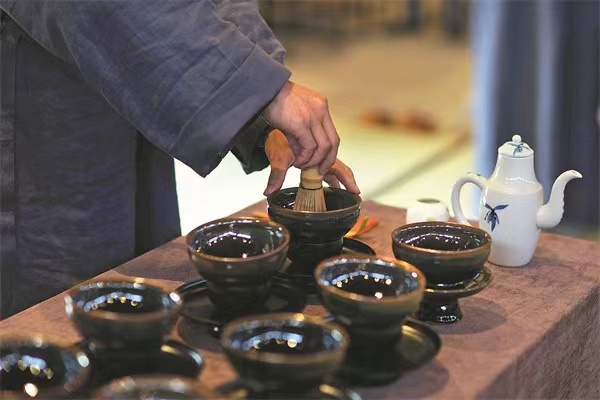
Jingshan Temple in Hangzhou, Zhejiang province, plays host to regular ceremonies to help visitors better understand traditional tea culture. Its tea ceremony is included in UNESCO's Representative List of Intangible Cultural Heritage of Humanity. [Photo provided to China Daily]
It is also a platform for promoting and exchanging tea culture.
Before setting out on his journey to research tea, Lu had led an unusual life. Abandoned as an infant in what is today's Tianmen, Hubei province, he was adopted in the year 733 by Zhiji, a Buddhist abbot, and grew up in the Longgai Temple.
It was there that he first learned to brew tea, but unwilling to live a pious life, in his teens he became an actor of comedic characters. Later an official recognized his talent and recommended him to pursue further learning.
When the An Lushan Rebellion broke out in 755, Lu left Central China for the east and started his exploration into tea.
Perhaps his bond with the Zen lifestyle never ended. At Huzhou's Miaoxi Temple, he met Jiaoran, a monk poet who enlightened him in the philosophy of tea drinking.
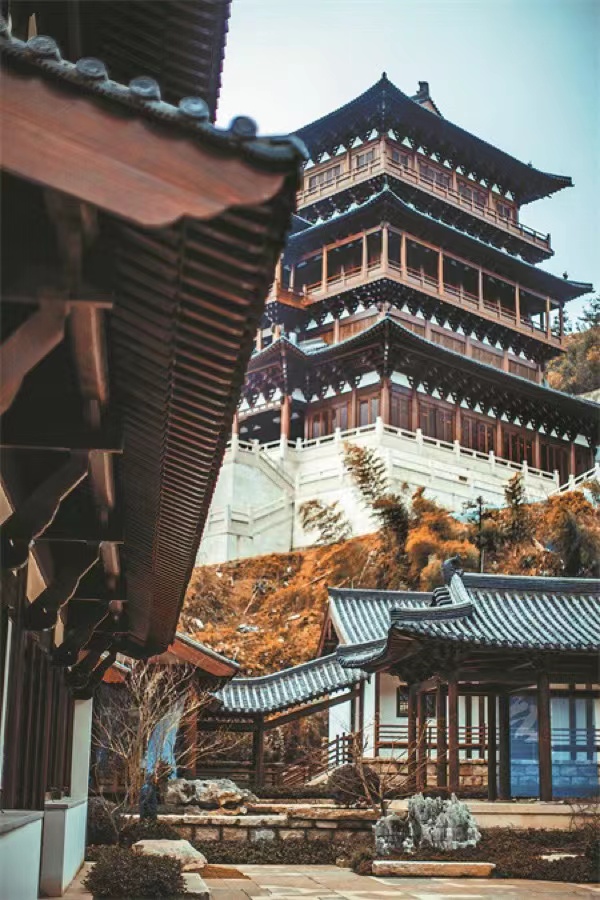
Jingshan Temple in Hangzhou, Zhejiang province, plays host to regular ceremonies to help visitors better understand traditional tea culture. Its tea ceremony is included in UNESCO's Representative List of Intangible Cultural Heritage of Humanity. [Photo provided to China Daily]
"Served as a beverage, tea is best suited to those who uphold discipline and moral conduct," Lu wrote in The Classic of Tea, emphasizing the tea preparation and ritual, which helped elevate tea into a symbol of refinement and social status.
An exemplar among tea drinking rituals is the Jingshan Tea Ceremony, a solemn ceremony hosted at the Jingshan Temple in Yuhang district, Hangzhou, Zhejiang province, where Lu visited during his journey.
Though it is recorded that the temple's founder offered tea as a sacrifice to Buddha in the mid-Tang Dynasty, the ceremony became a mature practice during the Song Dynasty (960-1279), in which tea was relished by Buddhist monks and guests, the majority of whom were literati and bureaucrats.
Here, tea became a medium for meditation and enlightenment, which involved more than 10 formal procedures, including welcoming the guests, burning incense and paying tribute, as well as making and drinking the tea.
"The ceremony reflected the refined lifestyle of literati and bureaucrats from the Song Dynasty," says Yanping, a Buddhist monk at the temple and an inheritor of the art form.
"The senior monks of Jingshan Temple at the time wanted people to feel their own existence through relishing a cup of tea."
Contrary to contemporary tea drinking, habits of consuming a considerable amount within a short time, Yanping says that Song Dynasty attendees would usually savor one small cup in two hours in silence.
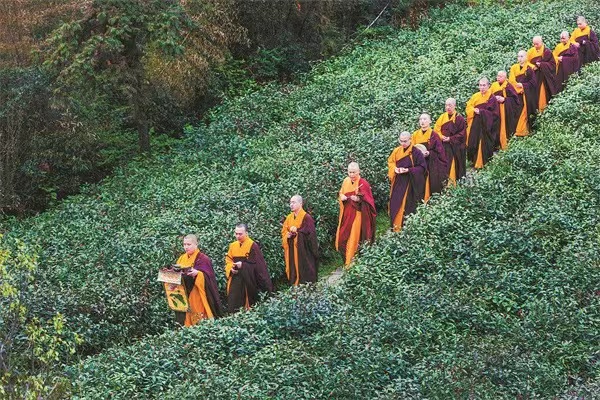
Monks at Jingshan Temple, Hangzhou of Zhejiang province, hold tea-picking rituals to keep ancient traditions alive. [Photo provided to China Daily]
"What contrasts with facing a single object for two hours is the richness and nobility of the mind. Although the tea drinkers may live in a busy world, their minds are free and at ease. This state of mind is the most beautiful thing about the ceremony," Yanping adds.
The tea-making technique used at the ceremony is whisking — using a bamboo implement to mix the powder with hot water, a style prevalent in the Song Dynasty.
According to Yanping, Jingshan Temple has always been a platform for religious and cultural exchange, with monks from Japan and Korea coming to study at the temple from ancient times to today.
As early as the Tang Dynasty, a Japanese monk who studied at Jingshan Temple took tea drinking back to Japan, but in the Song Dynasty, two other influential monks, Enni Ben'en and Nanpo Shomyo, introduced the temple's tea traditions to Japan. This was the origin of Japan's tea ceremony known as Sado.
The ceremony is still held regularly at the temple, 18 of which each year are open to the public. Each ceremony can host up to 60 attendees.
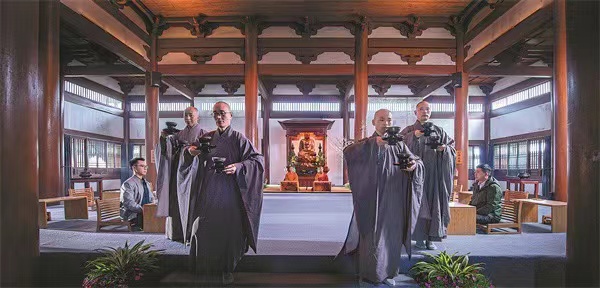
Jingshan Temple in Hangzhou, Zhejiang province, plays host to regular ceremonies to help visitors better understand traditional tea culture. Its tea ceremony is included in UNESCO's Representative List of Intangible Cultural Heritage of Humanity. [Photo provided to China Daily]
To cater to the growing number of visitors with an interest in tea culture, a folk edition has also been developed at Yuhang district. Hosted at cultural centers and boarding houses, these events allow the attendees to don Song Dynasty attire and drink tea under the guidance of tea makers and sommeliers.
Last year, traditional tea processing techniques and associated social practices in China were inscribed on UNESCO's Representative List of Intangible Cultural Heritage of Humanity. Both the Zisun tea-making technique and Jingshan Tea Ceremony were included.
While tea brought these areas cultural depth and economic prosperity, the legacy of the "tea saint" is never forgotten. Across the regions Lu set foot — Huzhou for example — his statues can often be seen and his stories are still being told.
One particular town in Huzhou's Wuxing district, Miaoxi, is a site of veneration for tea lovers around the country to visit and pay homage. According to historical texts, when Lu first arrived at what is today's Zhejiang, he stayed in Wuxing's Miaoxi Temple, located on the Zhushan Hill, where he became a close friend with Jiaoran, the abbot of the temple.
The two developed a close bond that lasted the next four decades, with Lu being inspired by Jiaoran to explore the philosophy of tea and modify his work. Even in death, Lu was buried near Jiaoran, on the hill, according to his will.
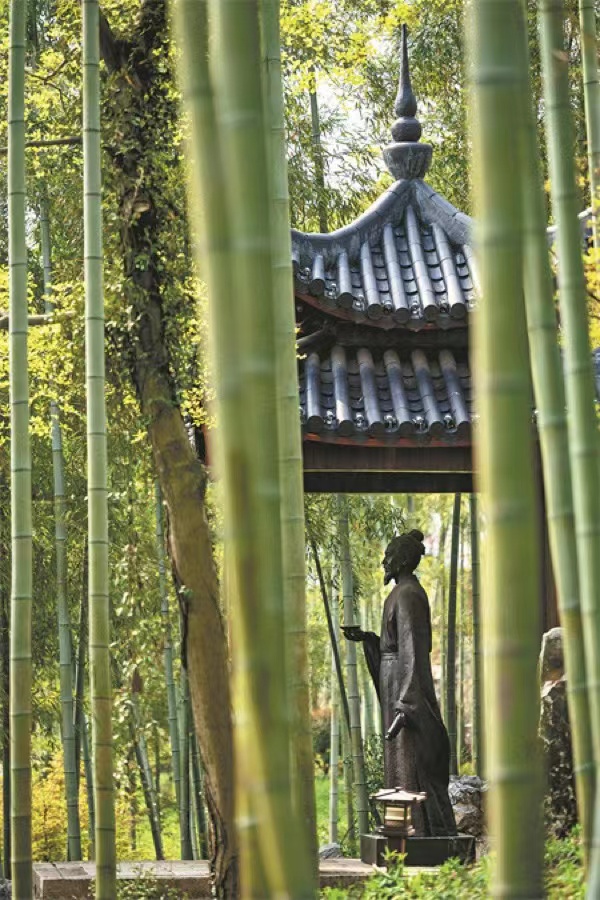
A statue of Lu Yu at Zhushan Cultural Park in Huzhou, Zhejiang province. [Photo provided to China Daily]
Although Miaoxi Temple is now nowhere to be found, and the location of Zhushan Hill for a long time was under dispute, historical geographer Chen Qiaoyi conducted research and stated that Zhushan Hill is in today's Miaoxi town, where Zhushan Cultural Park has been built as a part of the town's Xisaishan Holiday Resort.
"At Miaoxi Temple, Lu Yu spent three years writing the first draft of The Classic of Tea. He then traveled to a lot of places to conduct further research while making further modifications," says Lyu Jianliang, deputy director of Xisaishan Holiday Resort.
On Tomb Sweeping Day this year, around 150 tea experts and enthusiasts gathered at the park, offering incense and flowers in front of a monument in commemoration of Lu.
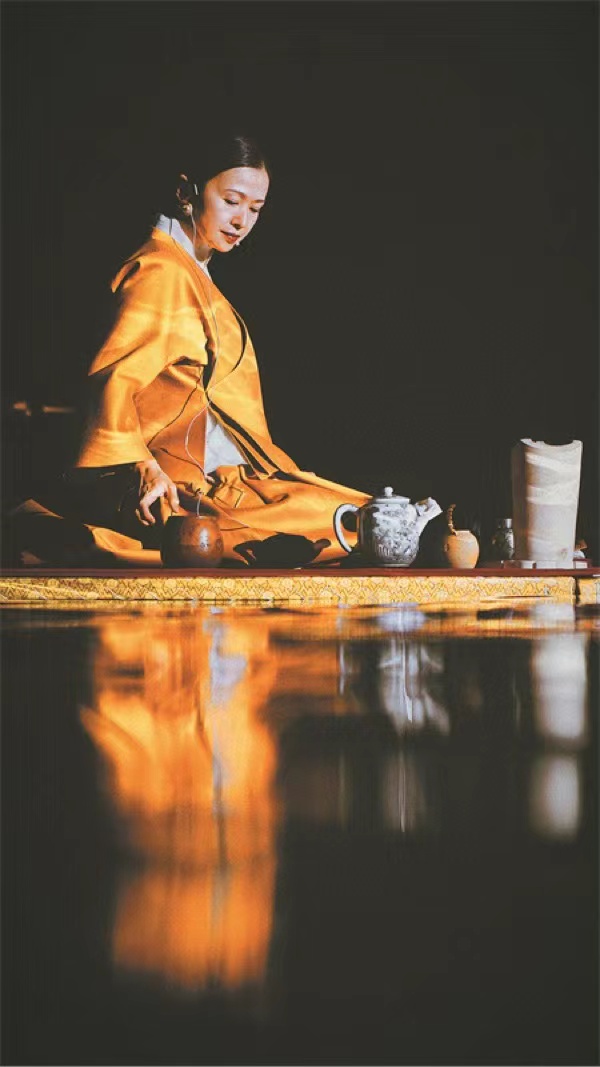
Tea rituals are regularly held at Zhushan Cultural Park, Huzhou. [Photo provided by Zhang Wei/China Daily]
Other events are also hosted at the park, including a tea cultural tourism festival, salons, markets and study tours. These events actively engage visitors in tea-drinking practices from different dynasties and experience the culture and philosophy involved.
Starting from May, the China Cultural Centers around the globe are due to launch Tea for Harmony — Yaji Cultural Salon, featuring a series of events, including exhibitions, performances and lectures, promoting Chinese tea culture to the world.